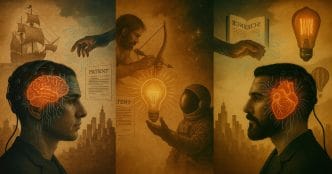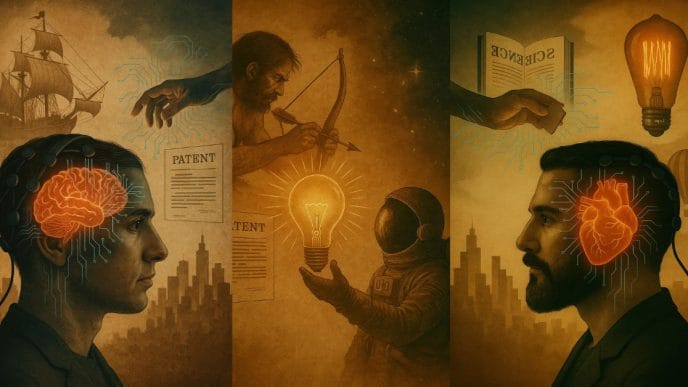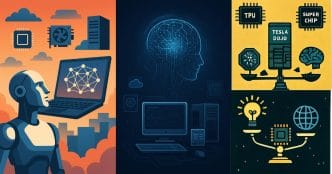“What if you could trade chaos?”
It sounds absurd at first. Humans spend centuries trying to predict, control, and optimize the world around them. Algorithms map supply chains, AI predicts consumer behavior, and quant funds chase the tiniest market inefficiencies. And yet, no matter how sophisticated our models, some phenomena remain stubbornly unpredictable. Cutting-edge startups, AI researchers, and crypto innovators are asking a radical question: what if randomness itself could be harnessed, quantified, and traded? Imagine a concept where chaos could be harnessed and analyzed as an investment opportunity.
Chaos as a Resource
Industries have long attempted to convert uncertainty into actionable data. While some derivatives and prediction markets exist, chaos itself is not officially recognized as a tradable commodity.
- Weather Derivatives and Disaster Data: Reinsurance companies monetize unpredictability by turning historical and real-time weather data into financial products. Hurricanes, floods, and droughts are no longer just disasters; they are tradable datasets. Algorithms calculate probabilities of extreme events with high precision, and traders buy and sell exposure to these events, effectively transforming chaos into capital.
- Random Number Marketplaces: In cryptography, gaming, and AI, true randomness is rare. Most software relies on pseudo-random number generators, which are predictable with enough computation. Quantum random number generators and specialized hardware produce high-quality entropy streams for cryptography and research, though these are not widely traded or tokenized in financial markets.
- Entropy Tokens on Blockchain: Some blockchain projects use verifiable randomness for lotteries, AI seeding, and smart contracts, but these do not constitute a broadly liquid financial asset class.
Chaos is no longer an accidental byproduct of complexity. It is now an extractable, verifiable, and usable resource in research and cryptography.
Sidebar 1: Quantum Randomness Generation
Quantum mechanics is the ultimate source of unpredictability. Unlike pseudo-random generators, quantum processes are inherently probabilistic:
- Photon-based randomness: A photon passing through a beam splitter has a 50/50 chance of taking one path or another. Measuring which path it takes generates a truly random bit.
- Electron spin or radioactive decay: Devices measure spin orientation or decay events, producing bits that cannot be predicted, even with complete knowledge of the system.
- Integration with APIs and tokens: Startups provide quantum random number generators that feed entropy streams into cryptographic systems, smart contracts, or AI models.
Quantum randomness can be used in blockchain and cryptographic applications, but large-scale tokenized markets for randomness do not yet exist.
AI and the Necessity of Unpredictability
Artificial intelligence thrives on patterns, but the most interesting behaviors emerge only when algorithms encounter unpredictability. Randomness is critical in multiple domains:
- Cryptographic Security: Entropy underpins secure key generation. Weak randomness in AI models or blockchain protocols can lead to catastrophic vulnerabilities. Repeated seed patterns in neural networks or pseudo-random generators can be exploited to reverse-engineer private data or control outputs.
- Creative AI Algorithms: Generative adversarial networks, procedural content generation, and deep reinforcement learning rely on stochastic inputs to produce novel outputs. True randomness prevents repetitive, overfit behaviors and fuels innovation in art, music, and scientific discovery.
- Reinforcement Learning and Exploration: Random perturbations allow RL agents to escape local minima and discover strategies deterministic algorithms would miss. Entropy-driven exploration is useful for training autonomous agents in dynamic, high-dimensional environments.
Randomness is not just noise. It is fuel for security, creativity, and the evolution of intelligent systems.
Sidebar 2: Entropy Oracles for Smart Contracts
Blockchain requires deterministic execution, yet randomness is essential for lotteries, NFT drops, and decentralized games. Entropy oracles solve this problem:
- Trusted hardware entropy oracles generate random numbers using hardware noise and sign them cryptographically to prove authenticity.
- Decentralized randomness protocols such as Chainlink VRF combine contributions from multiple nodes to produce a verifiable random number on-chain.
- Applications: Smart contracts can draw on these verified entropy sources to determine game outcomes, allocate resources, or distribute probabilistic rewards without exposing systems to manipulation.
This approach makes randomness in blockchain both transparent and unpredictable, a critical factor for DeFi, gaming, and blockchain-based systems.
Financial Futures on Chaos
Markets thrive on volatility, even while seeking certainty. Trading chaos is becoming a sophisticated strategy:
- Volatility Index Futures: Instruments like the VIX allow traders to bet on market turbulence itself, rather than specific asset prices. Participants speculate on the magnitude of uncertainty.
- Entropy ETFs and Chaos Startups: Some indices and prediction markets attempt to track unpredictable phenomena, but no tokenized index currently allows direct investment in “chaos” itself.
- Prediction Markets: Platforms like Augur or Polymarket let users bet on rare or extreme events. These markets quantify collective uncertainty, converting societal unpredictability into tradable data points.
Financial markets are exploring ways to manage volatility and uncertainty, but chaos is not officially recognized as a distinct asset class.
Sidebar 3: Chaos in AI Exploration
Randomness drives AI learning in critical ways:
- Reinforcement Learning Exploration: RL agents use stochastic perturbations to explore beyond local optima. Techniques include epsilon-greedy exploration, Gaussian noise injection, or stochastic policy sampling.
- Dropout as Randomness Injection: Neural networks randomly disable neurons during training to prevent overfitting and encourage generalization.
- Random Seeds in Generative Models: GANs, VAEs, and diffusion models rely on random seeds to generate diverse outputs. Changing entropy inputs produces new variations, crucial for creative AI applications.
Random seeds and entropy streams are useful for AI applications, but AI can function effectively using standard pseudo-random generators; they are not as critical as compute or training data.
Risks and Ethical Considerations
Profiting from chaos is intellectually compelling but ethically complex:
- Are investors hedging against risk or exploiting misfortune?
- Could chaos-based financial instruments incentivize manipulation or artificial amplification of unpredictable events?
- How does society balance innovation with the potential for harm, especially when markets commoditize disasters that impact vulnerable populations?
Technology can capture randomness, but its ethical deployment will determine whether chaos trading becomes a tool for progress or exploitation.
In a hyper-optimized world, nearly every resource—data, energy, attention—has been quantified, analyzed, and monetized. Chaos remains largely theoretical as a quantifiable investment. The idea of quantifying and leveraging chaos remains largely theoretical and exploratory.
Randomness remains a critical tool for research, AI, and cryptography, but it is not an officially recognized financial hedge or asset. For technologists, AI researchers, and crypto engineers, chaos is both a challenge and an opportunity. Those who learn to harness, measure, and deploy it will define the next era of computation, finance, and intelligent systems.
The future is uncertain. That is the point. Chaos is the new frontier.















